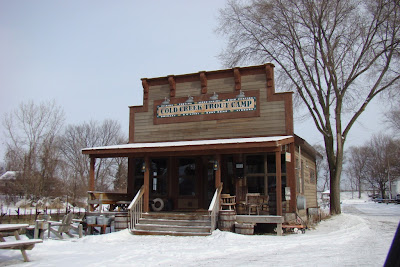While looking for a few good birds last week, we enjoyed some of the best Amish country scenes:

Nothing is more picturesque than these corn fields in winter. Not only are the corn shocks pleasing to the eye, a reminder of the "old ways" of farming, they also provide shelter for wildlife.
Small birds and mammals, such as mice and voles, find these fields more habitable than the corn stubble in my neighborhood. Modern farming practises leave very little behind for the critters.

We took our time searching along the natural stream beds running between the fields. Note this stream has not become a victim of the modern practise of channelizing. Too often in agricultural areas, streams are dug out- wider and deeper- to accommodate the torrential run-off created by drain-tiling fields. This "modern" farming practise creates erosion and reduces habitat for birds, fish and wildlife of all kinds. Not to mention, the silt and chemical pollution flowing in stream and rivers eventually finds its way into the Ohio River, the Mississippi and on down to the Gulf of Mexico.
A wide grassy bottomed flow is just the place to look for wintering Wilson's Snipe. Once called the Common Snipe, these birds are more abundant than one might imagine. Their excellent camouflage makes them difficult to locate in their preferred habitats. We counted five in this stream alone.

Brr... it must be chilly working for a living in that icy water! Foraging with heads under water- here they are- successfully waiting out winter on the edge of a stream. It can't be an easy life, but perhaps they know the Amish saying:
...
There is only one way to fail, that's to quit.




























